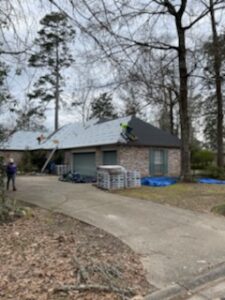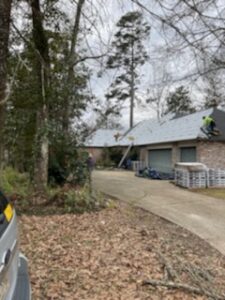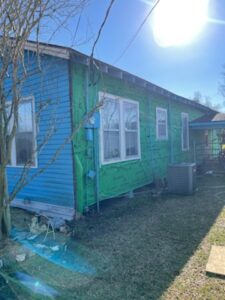Are you preventing squirrels from damaging your house?
Squirrel damage is a massive problem worldwide, and I can tell why. Many people think it’s amusing to watch squirrels, but homeowners have issues with them. They chew through plastic wood, even tear attic vents to gain access to the entire house, and even bite on wires and start a fire; these are only some of the problems. If you want a squirrel damage house-proof, I recommend siding or doing a hardy trim to make it hardens the wood in your house. You may think this cannot be severe, but squirrels biting wires lit my shed on fire.
How can squirrels damage your house?
Squirrels are clever creatures and can chew about any home-building material to enter your home. They can chew through wood, soft metal, hard plastic, and much more. Squirrels often find a small hole, even one the size of a nickel, and turn it into a giant hole that is easier for them to get through. In addition, a common area for squirrels to use to gain access to your home is through your construction gaps. Squirrels will use your gutters as highway systems to find these access points behind the gutters. That is why sometimes homeowners cannot spot their entry point because it is located behind the gutter. Often they will find a small gap that they will chew on to make it big enough for them to get through.
All of these damages can lead to more significant issues down the road for your home. As previously stated, squirrels can do an immense amount of damage. Exterior squirrel damage can be costly to repair. Over the years, we have seen homes that have needed thousands of dollars in repairs. This is because their squirrel problem was not assessed and fixed in the early stages of a squirrel infestation.
The danger of health from squirrel damage
Squirrels can create countless holes, gutter damage, roofline damage, and more. Additionally, these holes can allow other insects and critters into your home, including bats and larger rodents. Most notably, holes can lead to severe water damage to your home and attic. Water flowing into your attic can ruin your insulation and your ceiling, which can also be a costly fix. Furthermore, water can lead to the growth of mold. Mold spreads rapidly and, if left untreated, can cause health issues for you and your family. Common mold-related health issues include throat irritation, respiratory problems, or more severe symptoms like anxiety, brain fog, and insomnia.
How to protect your house and how to know if rodents are in





In seeking to build nests, squirrels can damage homes and structures by chewing openings through the siding and underneath eaves. They also may chew through unscreened chimneys and vents and make nests in these areas. Once in this “nest,” these busy rodents often chew on insulation and wires, which can create a fire risk. Additionally, when squirrels run along utility power wires and cables, they can short out the transformers. You can protect trees and their fruit by wrapping the trunks with metal sheeting to create a band that is 6 feet long (keep the sheeting loose to allow for tree growth). However, if any tree’s branches come within 6 feet of a building, fence, power line, or other trees, this technique will not be effective, as squirrels will jump onto the tree from the nearby structure.
Preventing squirrels by:
Fencing is a good option for keeping squirrels out of gardens. Squirrels don’t like to climb plastic garden netting. A 4-foot-tall fence of this material is usually sufficient, but you may need to bury a few inches of the net in the ground to prevent them from digging underneath.
Another option is erecting wire fencing made of 1-inch mesh at least 30 inches high. For additional protection, extend the fencing 6 inches below ground, then 6 inches outward to prevent burrowing. If necessary, you can discourage climbing by including an electrified strand a few inches above the ground and about 3 inches above the fence line.
To protect bulbs, place 1-inch wire mesh over newly planted bulbs, and cover them with mulch. Nonfood bulbs can also be soaked in squirrel repellent before planting.
If you’ve heard skittering, scratching, or rolling noises from your ceiling, there’s a good chance you’re harboring some wildlife in your attic, but it may not necessarily be a squirrel. Pay attention when you hear the commotion to pinpoint the type of pest. Generally, squirrels are active during the day, so noises in the evening hours are more likely to come from nocturnal animals like rats and mice. If the strange sounds have occurred between March and October, it might even be that a mother came to nurse her newborn squirrels in the attic and out of the elements. In that case, you may find that the family leaves alone within a few weeks.
The danger that squirrels damage possess to nature
.Not only squirrels damage houses but nature. The eastern gray squirrel is a tree-dwelling rodent that feeds on foods such as tree fruits, garden vegetables, seeds, nuts, buds, and young plant shoots. Squirrel populations periodically rise and fall. Their habitat can range from one to one-hundred acres depending on food availability. When food sources are depleted, usually in the fall, they may travel, often as far as fifty miles, in search of better habitats. Squirrels in the wild have a lifespan of about four years. They can breed when one year old in mid-December or early January and again in June. Three to five young are born after a 45-day gestation, usually in April and August. Their nests are built from sticks, leaves, and stripped bark and are typically constructed high in trees. They also clip branches and small twigs for their nests, littering the ground beneath trees. This seldom causes damage to the tree, and little control is necessary.